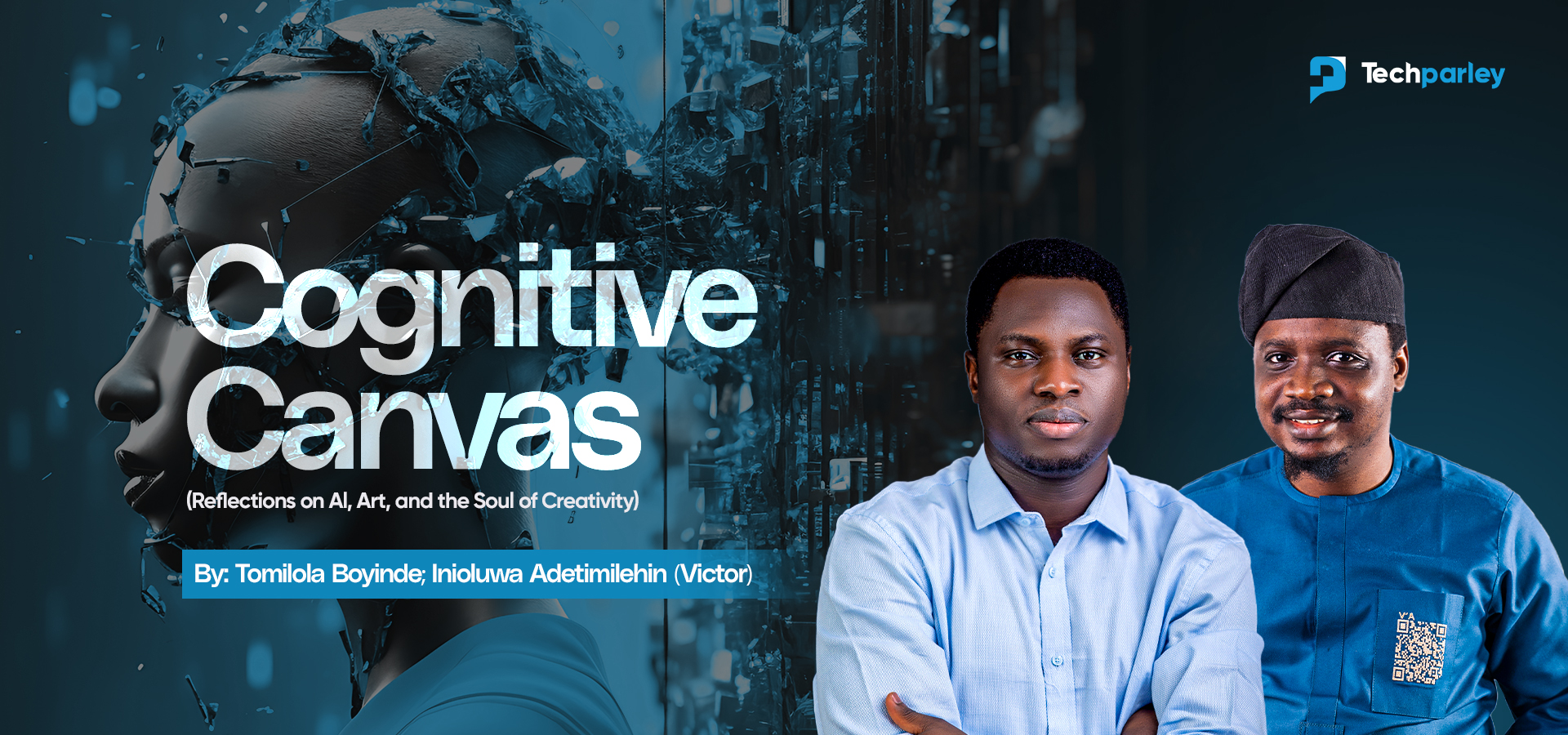Two artists can sit with the same graphite pencil and a blank sheet of paper, yet their drawings will not be the same. One bends the pencil into delicate cross-hatching, the other scribbles freely until a form emerges. The tools are identical. The outcomes are worlds apart.
Before the advent of generative AI, any artist worth their salt knew to express some creative ingenuity to stand apart from others. We’ve had Caravaggio’s light, Monet’s impression, and Da Vinci’s sfumato. Even in Nigeria, we have Edosa Ogiugo’s strokes, Mufu Onifade’s araism, Abiodun Olaku’s light and the Ibe Anababa’s dazzling colours. This creative differentiation is a lesson for our age of generative AI.
Now that everyone holds the same palette of algorithms, prompts, and models, creativity demands that sameness of tools should not result in sameness of art, which is now being called AI fluff and garbage. The difference should emerge organically in the peculiarity of depth, originality, metaphor, and human emotion (Abrams, 1953; Wordsworth, 1800/2001).
You must be the master of the tool. Do not let the tool master you. Colonise it. Shape it in your likeness. Make it bend to your rhythm, your obsessions, your quirks.
Theme and Style: The Map of Originality
Every creative journey begins with a theme. What subjects return to you uninvited? What questions haunt you enough that you circle back to them again and again? Some people speak to the times, others engage the timeless in dialogue. In painting, some are drawn to figures, others to landscapes. In writing, the equivalents might be protest, love, memory, or faith. The theme is the root of originality. Tools can remix endlessly, but only a creator with conviction can sustain a theme with depth and find new expressions (Heidegger, 1927/2010; Gadamer, 1960/2004).
Yet theme alone is not enough, style fleshes it out. Wallace Ejoh, the Nigerian painter, once said: I cannot teach you how to paint. I can only show you how I paint. Two artists may share the same subject, but one leans into pointillism while another embraces broad strokes. Style is not decoration; it is the groove your hand falls into when chasing truth.
AI can mimic any style on demand, but it cannot choose which is worth decades of refinement or the ridicule that comes with risk. Studies confirm that generative AI boosts novelty but reduces diversity of ideas (Doshi et al., 2024), often locking creators into design fixation (Wadinambiarachchi et al., 2024). True style emerges only through the courage to experiment and embrace strangeness.
School of Thought and Message: Anchors of Conviction
Every creator wrestles with tradition, Expressionism, Surrealism, Hyperrealism. The real question is not whether you belong to a school but whether you know which creative walls you lean on, and which you are willing to break. AI is a master imitator of these schools. It can paint like Van Gogh, write like Hemingway, or sing like Drake. But imitation is not conviction. The creative act demands a stance, a reason for embracing or breaking form (Saussure, 1916/2011; Barthes, 1977).
Beyond reference points lies the message. Tools can produce surface-level spectacle, but only conviction produces meaning. Every stroke or stanza is either a protest, a prayer, or a mirror (Gadamer, 1960/2004). Without a message, creativity degrades into mere performance—something AI excels at. Audiences already sense this.
Even when AI-produced works rival humans technically, people still judge human works as more authentic and emotionally resonant (Cunningham, 2025). The artist’s task, then, is to ensure that beneath the spectacle lies a world truth held together by the gravity of conviction.
Quirks and Idiosyncrasies: The Human Watermark
Perhaps, the most important frontier of differentiation lies in the shore of quirks; the peculiarities that resist reproduction. It might be the rhythm of your sentences, a colour palette you cannot abandon, or the silence you weave into performance. These quirks are however accidental they may seem, are your watermark. Back in art school, I was told that if they (colleagues) hadn’t found a specific blue and orange in a painting, they would doubt that I authored it.
AI as a probabilistic player thrives on averages and patterns. It chisels out the outliers in favour of conformity. Quirks, the social and mental fingerprint of human expressions that live outside the average, are often punished. Your quirks, born of obsession, habit, and lived experience, must be preserved by bold overtures.
A Conversation Across Time: The Enduring Debate
The debate about creativity and tools is not new. The Romantics insisted that genius is born from inner fire (Wordsworth, 1800/2001). The Expressivists saw art as the lamp of inner life (Abrams, 1953). The Phenomenologists reminded us that meaning is inseparable from lived being-in-the-world (Heidegger, 1927/2010; Gadamer, 1960/2004). Embodied cognition theorists add that our metaphors spring from bodily life itself (Lakoff & Johnson, 1980; Damasio, 1994; Barrett et al., 2024).
Meanwhile, the Formalists (Bell, 1914) and Postmodernists (Barthes, 1977; Baudrillard, 1981/1994) insisted that originality is a myth, all creation is remix. Computational creativity scholars like Boden (1990) and Colton & Wiggins (2012) argue that AI already performs combinational and exploratory creativity. And contemporary research supports them: AI can now produce plays approaching human fluency (Elias et al., 2025).
The debate remains unresolved, and perhaps that is the point. Machines can generate form, but they cannot care which side they take. They cannot wrestle with paradox, bear scars of conviction, or decide which truth is worth suffering for. To stand out in the age of generative AI is not to abandon the tools, but to wield them with intention. Theme, style, school of thought, message, quirks, each is a deliberate choice, not an outsourced accident.
Generative AI will amplify mediocrity for those who treat it as a master or a shortcut. But for the artist who bends it to their will, it becomes a chiselled edge. The paradox of our time is this: the more universal the tools become, the more singular your scars, your obsessions, your peculiarities must be. Depth remains the last frontier. Emotion is the watermark that cannot be copied.
As Wallace Ejoh reminded us, one cannot teach another how to paint, only how one paints. That is the truth AI cannot steal. Mastery is not in the tool, but in the hand that dares to wield it.
Authored by
Adetimilehin Inioluwa Victor (Vic’Adex) is a serial creative and polymath who blends spoken-word poetry, painting, and communication to drive cultural innovations that advance human capital. Recognised among the top 10 contemporary spoken-word poets in Nigeria in 2015, he has since expanded his artistry into building creative safe spaces, thought leadership, and strategic communications. As an Engagement Manager at SCIDaR, he is shaping communication as a critical tool for improving social outcomes across the continent. Among his initiatives – each framed as “a Vic’Adex Concept”- are 60 Seconds Poet, Sip and Paint Abuja, and Vic’Adex Concepts & Aesthetic Resources. He continues to volunteer and contribute to social causes aligned with his creative and professional passions.
Tomilola Boyinde – Founder/CMO/Host, Bulbling247
Tomilola Boyinde is a serial creative, global marketing technologist and founder of Bulbling247, a global storytelling platform exploring creativity, technology, and innovation. He witnessed and documented the new world invention, innovation and emerging technologies exhibited at the World Expo Dubai. He has contributed to the marketing and growth of both Nigerian and global brands, blending strategy, creative storytelling, and technology to craft campaigns that resonate and inspire. With a passion for human-centered innovation, Tomilola champions untold stories, amplifies emerging voices, and drives creative solutions that connect culture, technology, and businesses globally.
The AI & Creativity series was birthed by the conversation on Bulbling247 podcast. Watch the episode here: https://www.youtube.com/watch?v=5kXatW9RMM8&t=1391s
References
- Abrams, M. H. (1953). The mirror and the lamp: Romantic theory and the critical tradition. Oxford University Press.
- Barrett, L., et al. (2024). Minds in movement: Embodied cognition in the age of artificial intelligence. Philosophical Transactions of the Royal Society B: Biological Sciences, 379(1902). https://doi.org/10.1098/rstb.2023.0144
- Barthes, R. (1977). Image, music, text. Fontana.
- Baudrillard, J. (1994). Simulacra and simulation (S. F. Glaser, Trans.). University of Michigan Press. (Original work published 1981)
- Bell, C. (1914). Art. Chatto & Windus.
- Boden, M. A. (1990). The creative mind: Myths and mechanisms. Routledge.
- Colton, S., & Wiggins, G. A. (2012). Computational creativity: The final frontier? In Proceedings of the 20th European Conference on Artificial Intelligence (pp. 21–26). IOS Press.
- Cunningham, C. V. (2025). Human creativity versus artificial intelligence. Frontiers in Psychology. https://doi.org/10.3389/fpsyg.2025.1509974
- Damasio, A. (1994). Descartes’ error: Emotion, reason, and the human brain. Putnam.
- Doshi, A. R., et al. (2024). Generative AI enhances individual creativity but reduces idea diversity. Science Advances, 10(19). https://doi.org/10.1126/sciadv.adn5290
- Elias, S., et al. (2025). A comparative study of human versus AI playwriting. Humanities and Social Sciences Communications, 12(1). https://doi.org/10.1038/s41599-025-04999-2
- Gadamer, H.-G. (2004). Truth and method (J. Weinsheimer & D. G. Marshall, Trans., 2nd rev. ed.). Continuum. (Original work published 1960)
- Haase, J., & Pokutta, S. (2024). Human-AI co-creativity: Exploring synergies across levels of creative collaboration. arXiv preprint. https://arxiv.org/abs/2411.12527
- Heidegger, M. (2010). Being and time (J. Stambaugh, Trans., rev. ed.). SUNY Press. (Original work published 1927)
- Lakoff, G., & Johnson, M. (1980). Metaphors we live by. University of Chicago Press.
- Saussure, F. de. (2011). Course in general linguistics (P. Meisel & H. Saussy, Eds.). Columbia University Press. (Original work published 1916)
- Wadinambiarachchi, S., Kelly, R. M., Pareek, S., Zhou, Q., & Velloso, E. (2024). The effects of generative AI on design fixation and divergent thinking. arXiv preprint. https://arxiv.org/abs/2403.11164
- Wordsworth, W. (2001). Preface to Lyrical Ballads. In J. Gill (Ed.), The Cambridge companion to Wordsworth (pp. 72–85). Cambridge University Press. (Original work published 1800)





